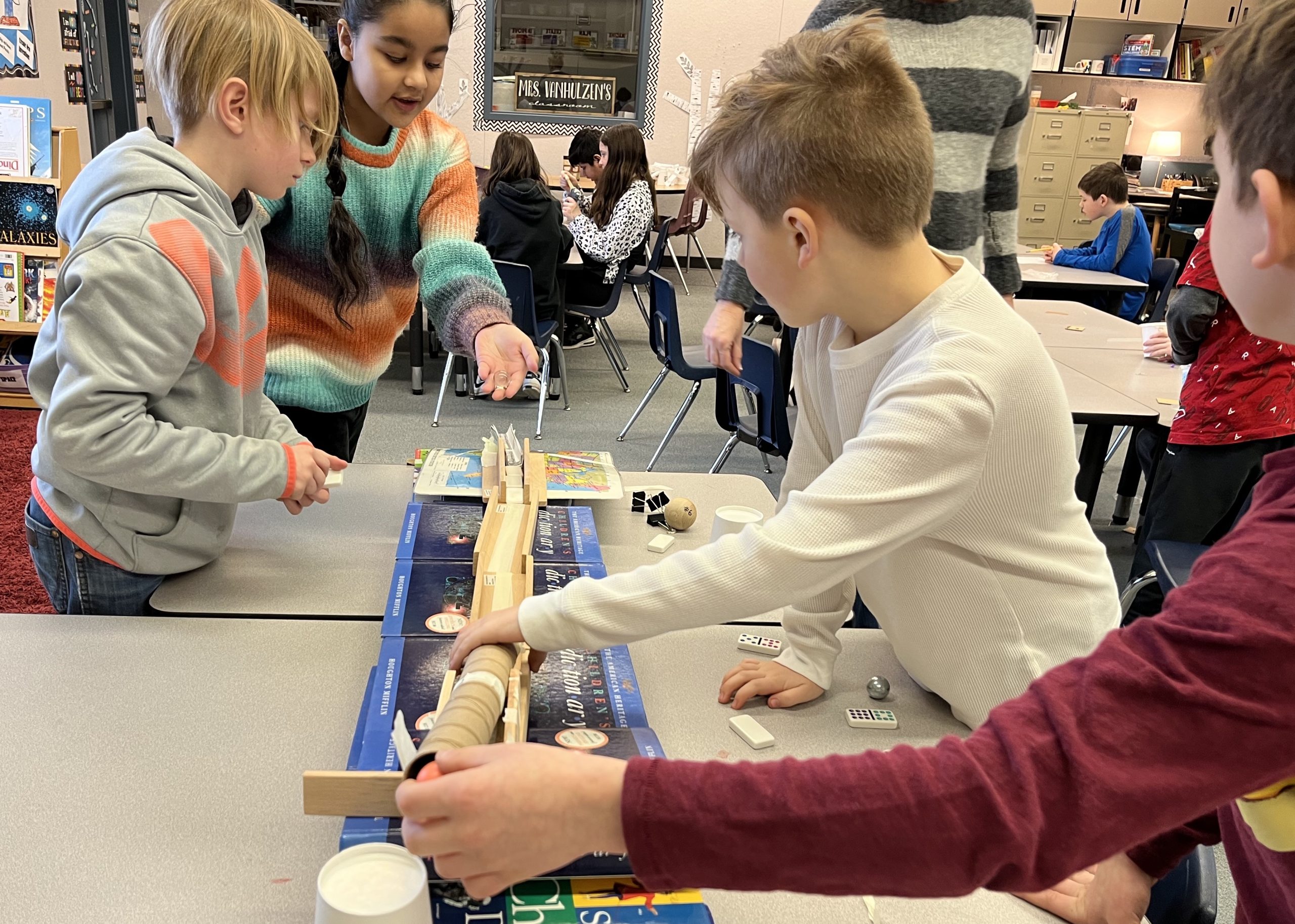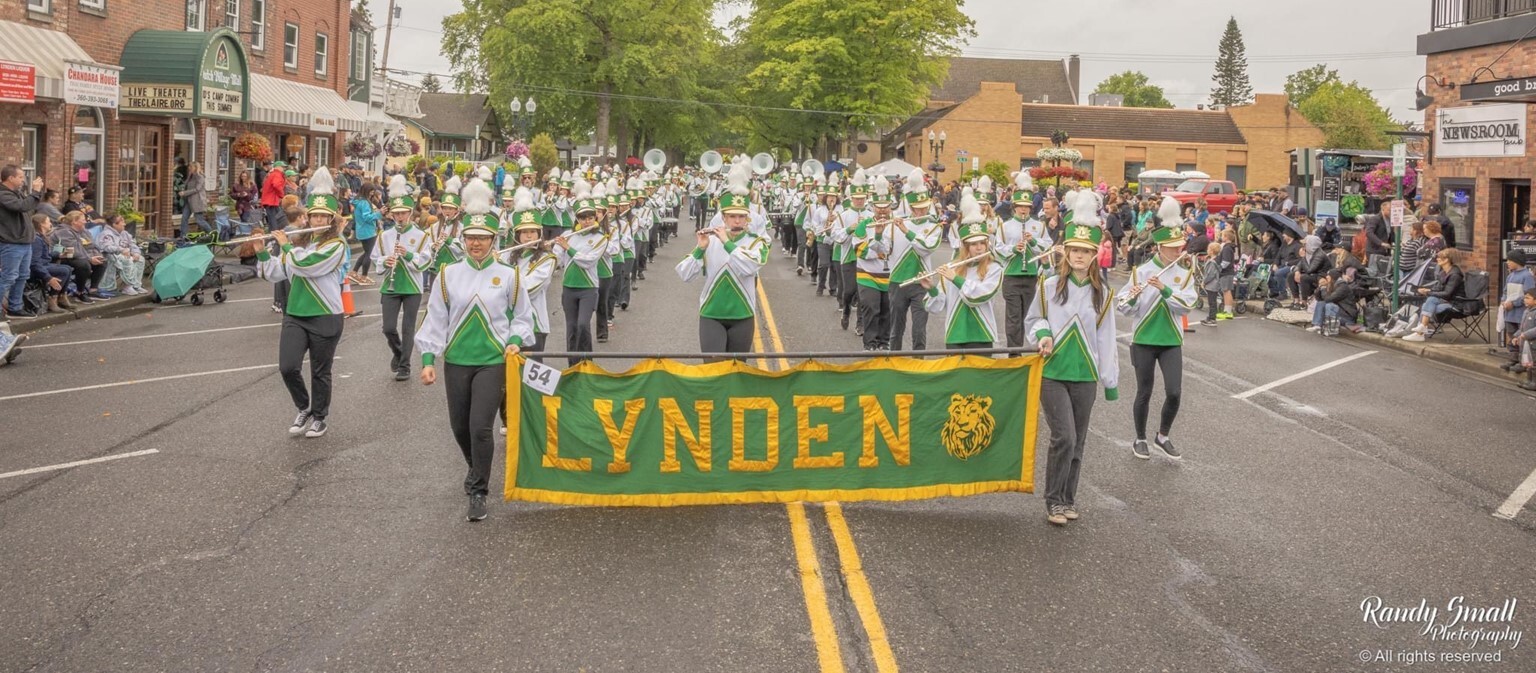
Elementary Students Add STEAM Class to Weekly Lineup
A group of Bernice Vossbeck Elementary students gathered around batteries, hand cranks, miniature light bulbs and conductors. It was electricity in action (and electric to see the looks on their faces when they figured it out). Just a table away, another small group crafted a ramp with obstacles for a small marble-like ball to plow through. And that’s all while a different set of students used rubber bands to store up energy and get their cup-and-straw concoctions scooting across the floor.
It was just another day in STEAM class.
STEAM education—science, technology, engineering, art and math—has become a regular part of the curriculum across all three elementary schools at Lynden Schools, allowing dedicated STEAM teachers (not that unlike a music or physical education teacher) to connect weekly with every single student in the building.
“They love the hands-on,” says Leanne VanHulzen, BVE STEAM teacher and a classroom teacher for nearly 30 years. “When I can get all the materials out and they can build and create, they love it. Teachers tell me they love it, and they all seem to love coming.”
New for the 2022-23 school year, the focus on STEAM offers teachers an opportunity to really get kids understanding the many elements of STEAM. “I would say I paint with a pretty broad brush,” VanHulzen says about the content. “Every student can be excited about science, curious about science.”
Using the Mystery Doug curriculum, each grade level has different activities and content tied to national standards. Often a STEAM class starts with a five-minute video, a discussion of the objective of the day and then a hands-on activity or experiment. Along with VanHulzen at BVE, Brandon Goodale at Fisher and Laura Sebastiani at Isom form the STEAM team for the district, working together to go over lessons and strategies.
The variety in content not only spans the school year but ranges across grades levels. That also adds an extra element of students getting excited about what’s in front of them for future years.
“I like they all get at least a little bit of science and the vocabulary,” VanHulzen says. “We can give them a background and a joy. Science is not a scary word, but a fun word. We have been teaching them how many jobs now come from STEAM and we talk about that all the time. They have to be curious, ask questions, make mistakes and learn how to fail. It is hard to fail and try again.”
Often students explore a variety of examples—such as in the above energy curriculum example—by rotating through action stations. An upcoming unit in STEAM features mini-Indy cars, an opportunity to merge technology into the mix. Already this year students have learned about electricity, created cornmeal canyons to learn about landslides and investigated chemical reactions, mixing baking soda with vinegar to blow up plastic bags. “That was pretty cool,” VanHulzen says. “It is giving them a taste of everything, and every grade is different so that is really nice.”
The benefits of STEAM run across multiple demographics of students. VanHulzen says students who struggle with language or just enjoy the hands-on opportunity all have an equitable opportunity to explore. And science is about teamwork, really forcing the kids to learn to work together while trying different ideas.
“I love watching kids explore with science,” VanHulzen says. “You can see the light bulb going on with the hands-on activities.”


